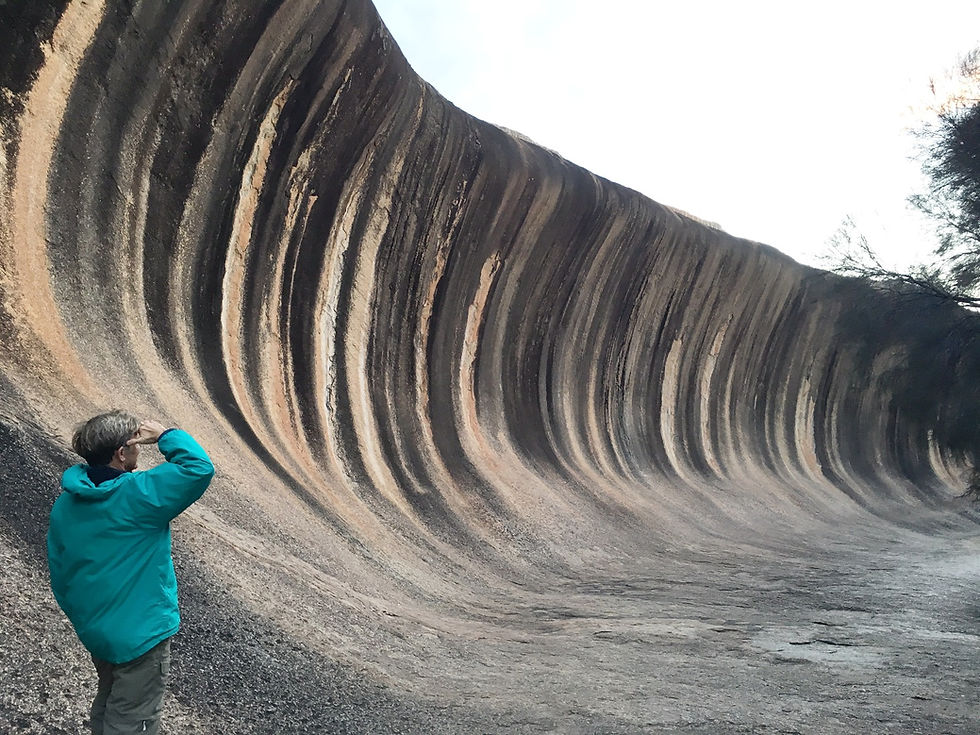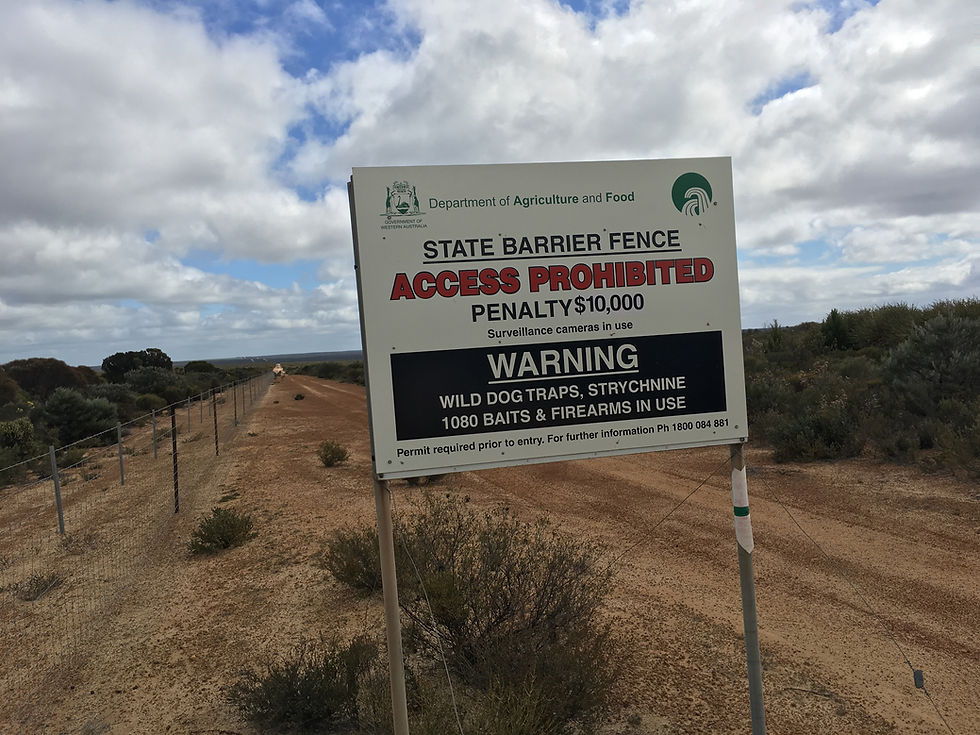MY LIFE WITH PLANTS: Strine Outback Bush Walk – Part 2
- Rachel Cobb

- Jan 1, 2017
- 3 min read
Updated: Jun 21, 2022
By Jim Bishop.
This is part two of a series about a September 2016 trip to view the wildflowers and scenery of Southwestern Australia.
Most of the interior regions of Western Australia are easily recognizable by the orange-red soil, relatively flat terrain, and miles of amazing straight unpaved roads with dense areas of bush lining both sides of the road. There are few, if any major rivers, but lots of low areas where water collects. Australia is one of the oldest continents and therefore soils have been heavily eroded and leached. In fact, Australian soils are some of the most nutrient poor on the planet and besides having excess iron and being highly acidic they are also extremely low in phosphorus, potassium and nitrogen and most trace elements. Millions of years of evolution has led to plants uniquely suited to these conditions and this explains why so many of the plants are difficult for us to grow in our California gardens.

Jim at Wave rock

We stopped at several places to look at the bushes and wildflowers along the road and made it to Wave Rock just in time to catch a spectacular sunset. It’s not nearly as large or famous as Uluru (Ayers Rock), but with so few people in the area it seemed every bit as remote. The next day on unpaved roads we headed south towards the southern coast of Australia. We stopped to look at the 1000-mile-long rabbit-proof fence that bisects Australia from the north to south. 24 rabbits, which are non-native to Australia, were released for hunting purposes in 1859. With no natural predators, by the end of the century, they overran the continent and devastated both farms and the local flora. To stop the western advance of the rabbits, the fence was completed in 1907. Several shorter fences were also constructed in other areas. In the 1950’s a virus that is fatal to rabbits was introduced and their numbers have remained somewhat in check ever since. Subsequently, the fence is still maintained to prevent the spread of native dingoes and emus, as well as non-native foxes and other agricultural pests.

We stopped periodically along the road to get an up-close look at the native plants in bloom. At each stop there were always several new species that we hadn’t seen a few miles back. The overall number and types were countless. The array of colors, shapes and forms was mind boggling.


As we got nearer to the south coast, we started to see more hills and taller plants and many additional species. We stopped in the tiny Shire of Ravensthorpe for the annual Wildflower Show. It was here that we met Enid Tink. Beginning 30 years ago, Enid’s father each spring would cut and display some of the blooming plants found within a 50-mile radius in one the world’s richest biodiversity areas and then store over 3000 the dried specimens in an onsite herbarium. On the day we visited, Enid - with the help of many local volunteers on one of the best years on record - had over 500 fresh cut species on display in the small exhibit rooms of the flower show. A steady stream of locals continued to bring in more flowers that were taken to the back to be identified, labeled and added to the display. Finally, we had names to go with many of the flowers we had seen.

The next day we explored the coastline and several national parks. The south coast has many large granite domes rising out of the ocean creating round islands and also interesting coastline hills. The sand at the beaches is pure quartz, shiny white and squeaks when walked on. The white sand reflected the sunlight which gives the water the most beautiful aquamarine color. The plant community here was also much softer and greener than inland and we recognized many of the same species that have been introduced into Southern California. To the east, we explored Cape le Grande National Park which was almost deserted. It was also here that we walked through the shrub with a mob of kangaroos and a dazzling variety of banksias - from small trees to ground dwelling species growing on the white sand dunes. There were also dense stand of hakeas, melaleucas, grevilleas, terrestrial orchids, acacias, adenanthos, calothamnus, countless species of pea bushes and many others. We had a beautiful white sand beach with giant sand dunes and granite boulders, shore birds and crashing waves all to ourselves as we watched the sun set behind the mountains to the west.

